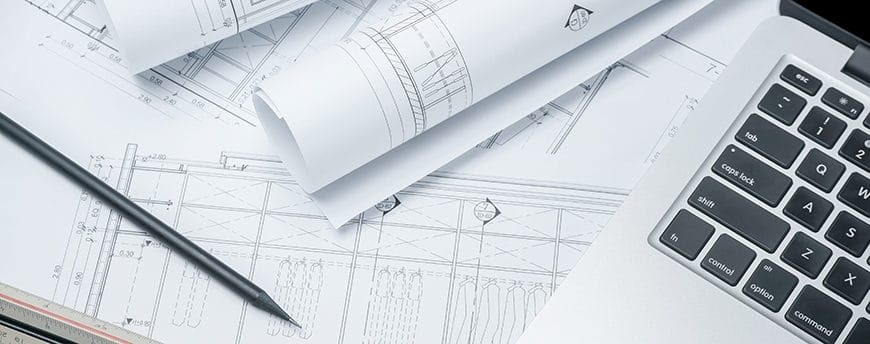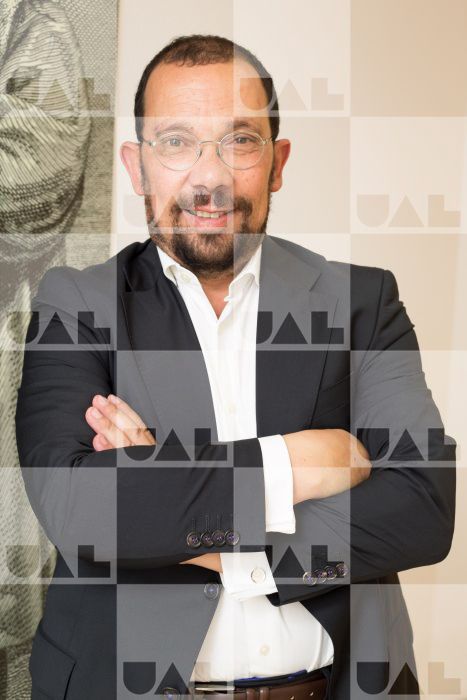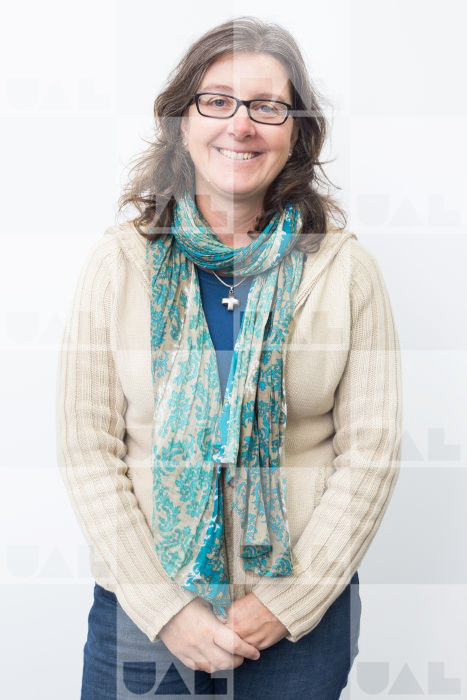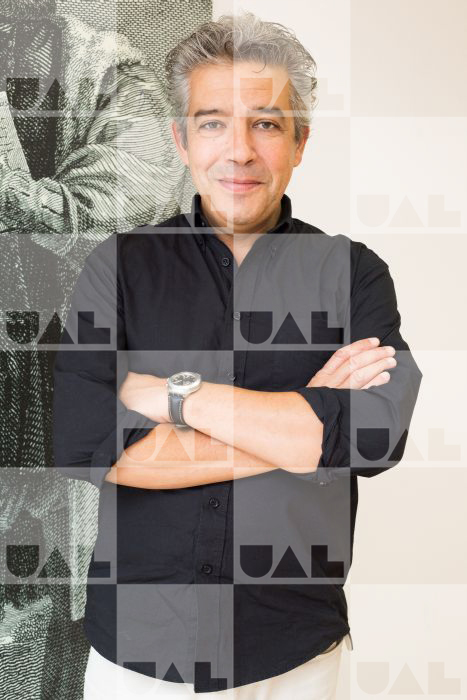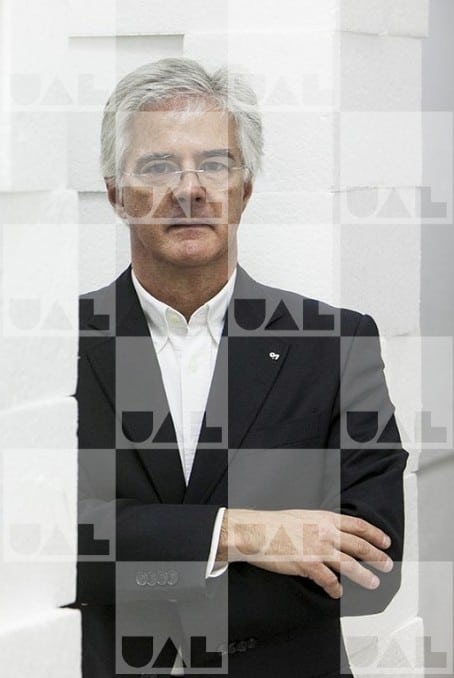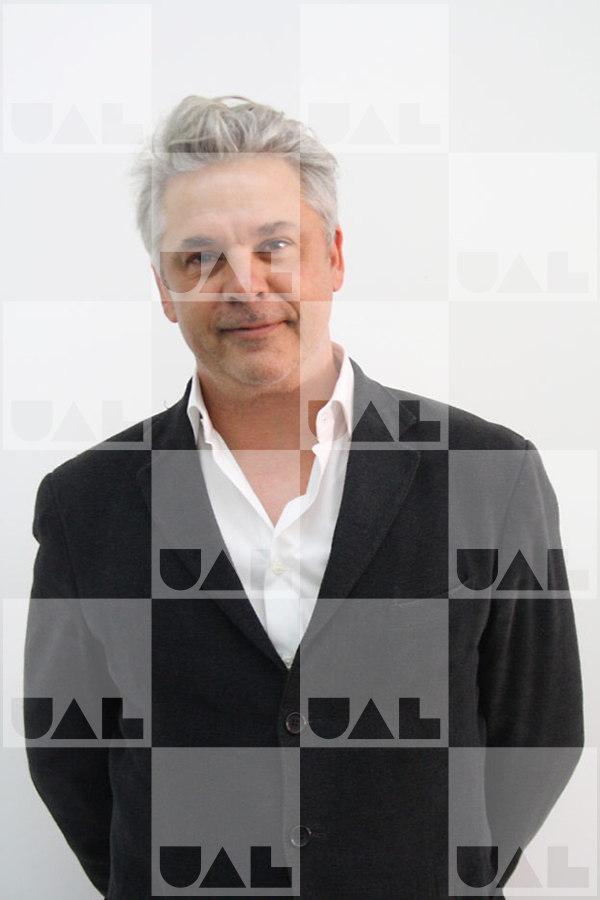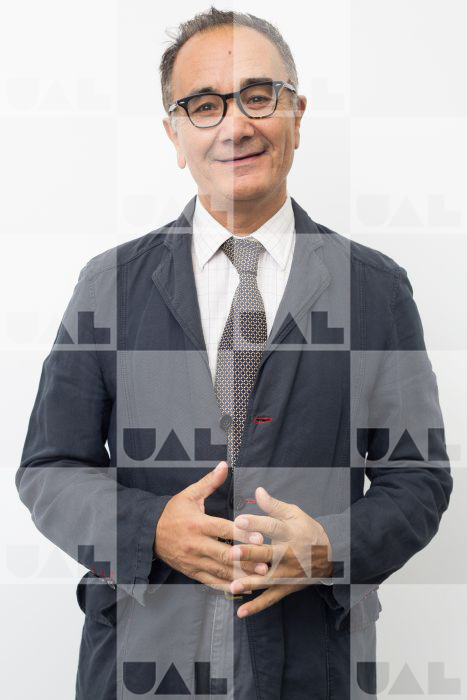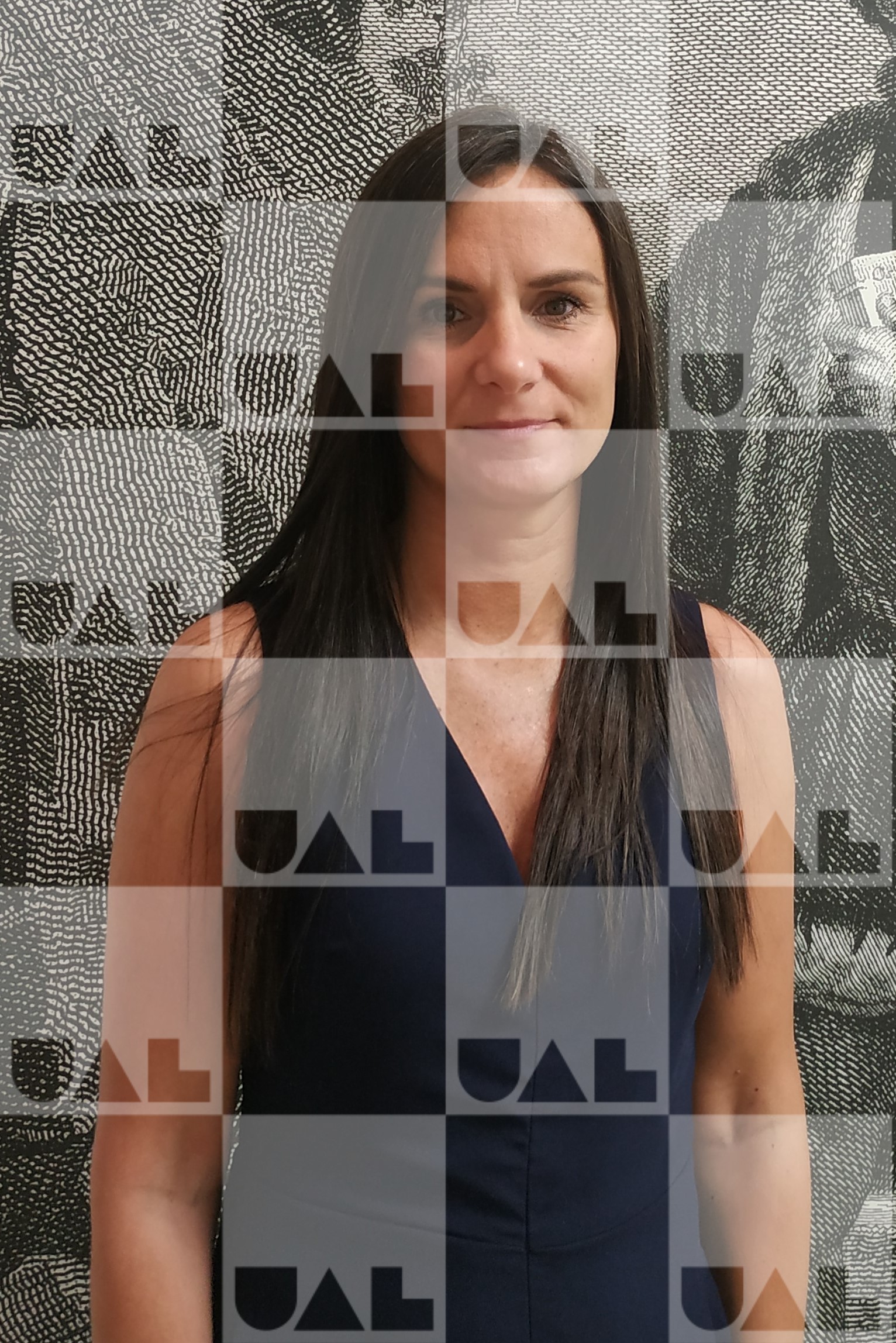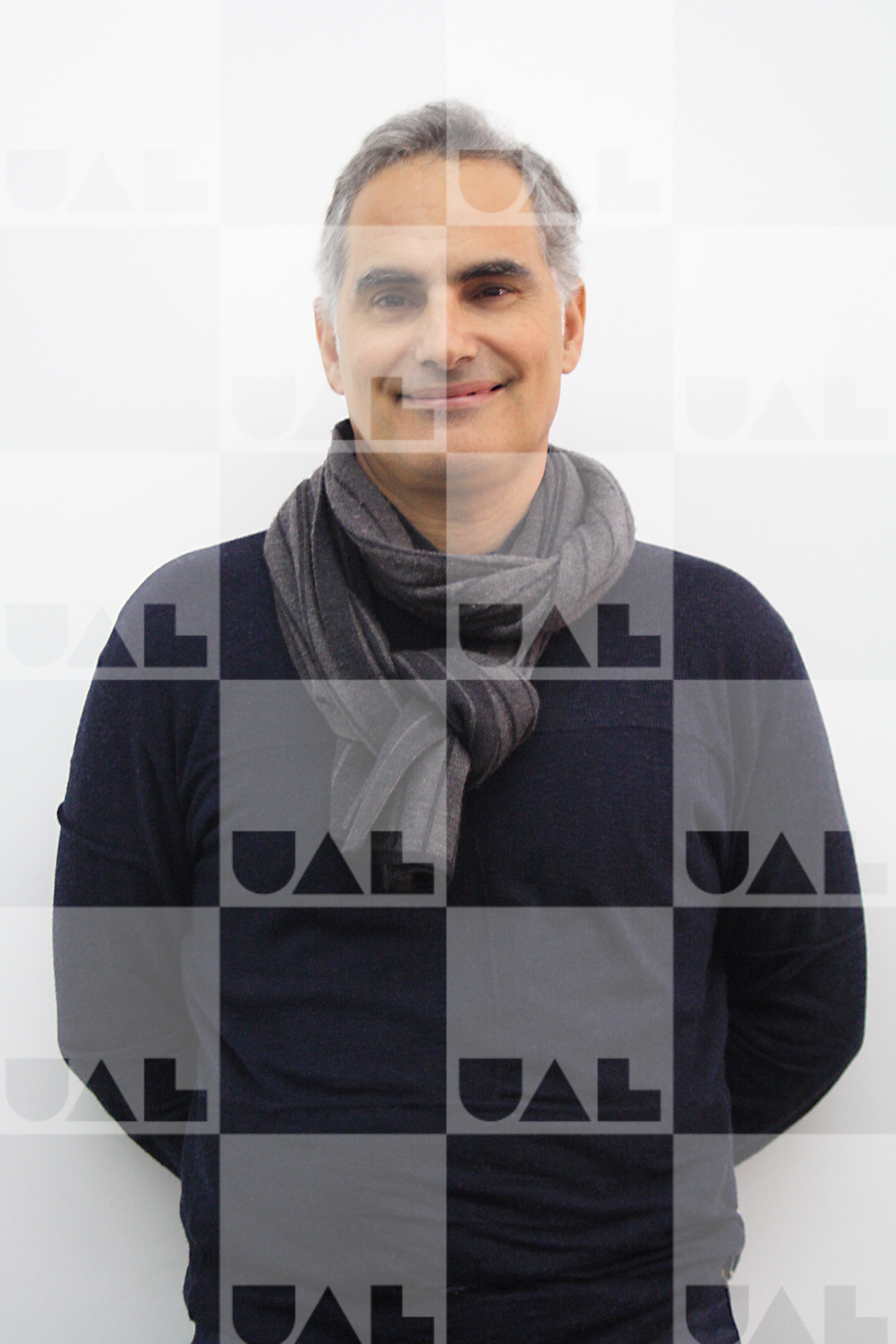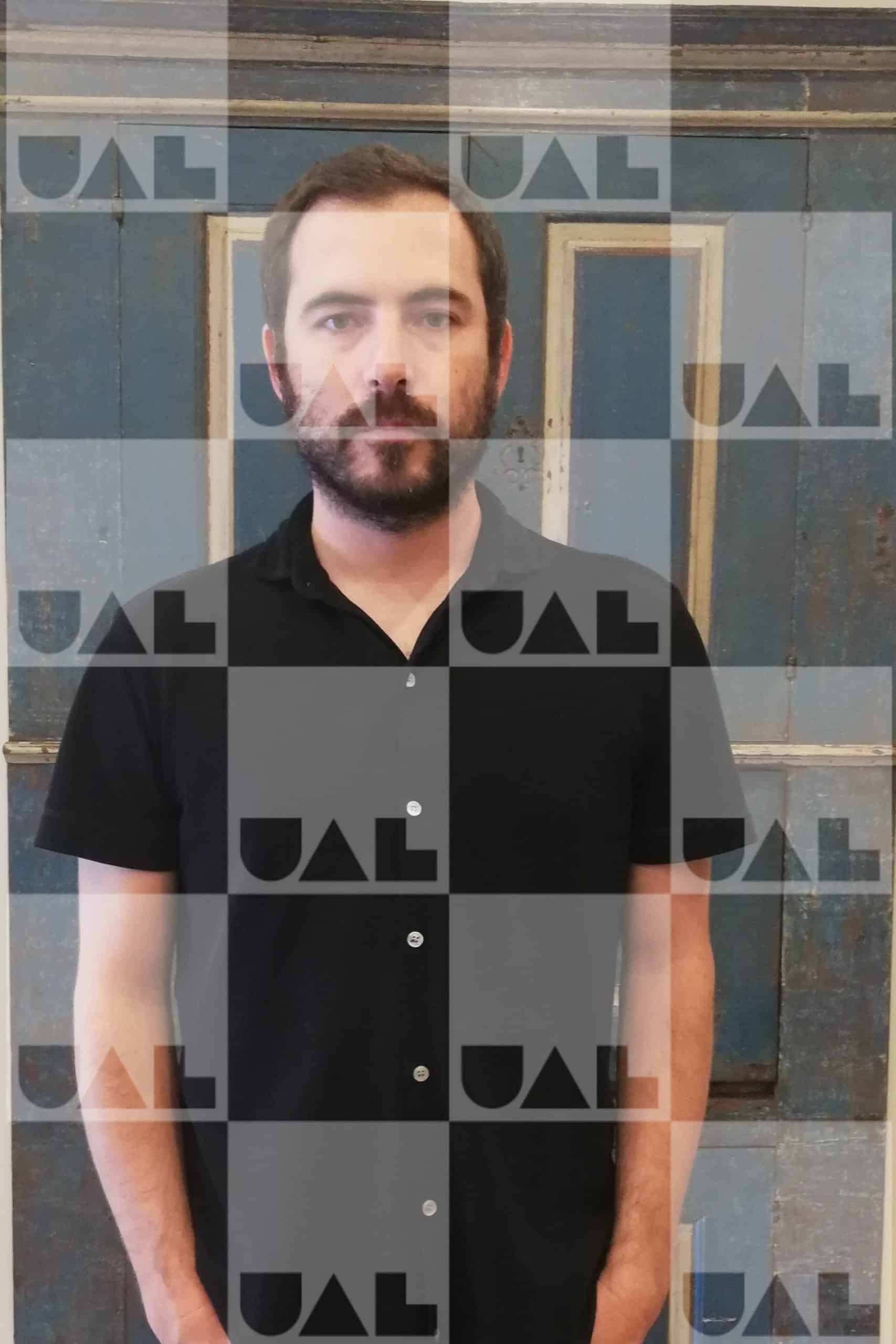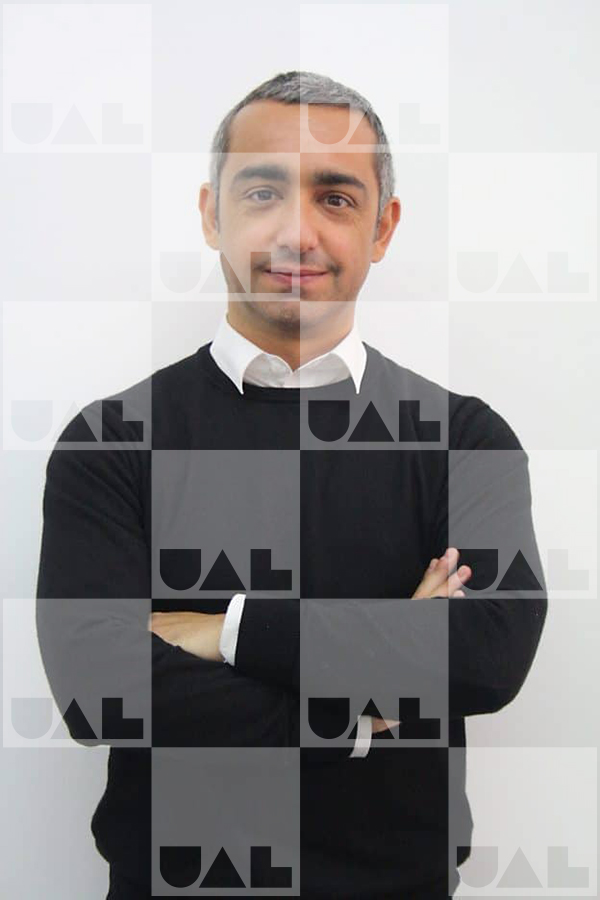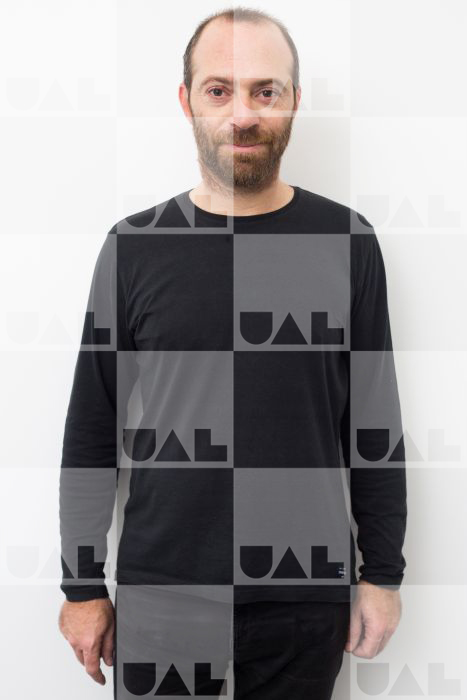ENTRANCE TESTS
Two of the following tests:
- 03 – Drawing
- 10 - Descriptive Geometry
- 16 - Mathematics
Documents
The study plan is divided into two cycles according to the Bologna Process.
The 1st cycle, with a duration of 3 years, confers the degree of Licentiate in Architectural Studies and corresponds to obtaining 180 ECTS.
- Order No. 9957-AP/2007, of April 18, Accredited by A3ES, on 06/09/2014.
The 2nd cycle, lasting 2 years, confers the degree of Integrated Master in Architecture and corresponds to obtaining 120 ECTS.
SYLLABUS
Project I
11 ECTS
The objective of the curricular unit is to gradually introduce the disciplinary complexity of Architecture (from cities to architectural objects), making familiar both the greatest number of spatial specificities and the competing concepts for its characterization and the instruments and procedures necessary for its representation and communication. . The constituent elements of urban space are analyzed, identifying significant spatio-temporal experiences and opening “scientific knowledge” to creative appropriation, enabling invention.
Discovery of the “mechanisms” of composition.
Drawing I
6 ECTS
The objective of the curricular unit is to develop a critical, creative and interpretive sense through drawing. It starts with space as an object of study, summoning the mastery of manual and mental materials through the experience of using various techniques, methods and graphic processes.
Geometry I
3 ECTS
The objective of the curricular unit is to sensitize and instruct students on the importance of theory and practices of representation, as tools for designing architecture, according to codified and universal methods, such as communication languages.
Theoretical presentations and practical work use different media and supports, planimetric and three-dimensional, depending on the subject. Essential notions of geometry (plane figures, cube and tetrahedron) and representations of modeling spaces in small objects are discussed.
History of Architecture I
4 ECTS
The objective of the curricular unit is the knowledge of the sources of Western Architecture and Urbanism from the origins to the end of the Ancient World, taking into account the specificity of each space-time context and the contribution of each to the constitution of the "genome" of culture. western architecture and urban planning. It is intended to equip the student with the theoretical and methodological tools that will allow him to decode the architectures and urban forms of the past and identify the modalities of their transmission/adaptation or denial, in each of the different historical-architectural frameworks and in their articulation with the Modernity.
Scientific Work Methodology
3 ECTS
The objective of the curricular unit is to know the nature or foundations of Science and characterize scientific knowledge
in relation to other types of knowledge.
There are also objectives To identify and know how to operationalize the main research methods and techniques applicable to Architecture.
Architecture Technologies I
3 ECTS
The objective of the curricular unit is to study aspects related to the evolution of technologies and construction systems.
The constructive aspects that characterized the main periods of the History of Architecture are analyzed, highlighting the evolution of materials and associated technologies. It is intended to understand the aspects that involve an architectural construction as well as a creative synthesis of the main topics covered.
Project II
11 ECTS
The objective of the curricular unit is to gradually introduce the disciplinary complexity of Architecture (from cities to architectural objects), making familiar both the greatest number of spatial specificities and the competing concepts for its characterization and the instruments and procedures necessary for its representation and Communication. The constituent elements of urban space are analyzed, identifying significant spatio-temporal experiences and opening “scientific knowledge” to creative appropriation, enabling invention.
Continuation of the incentive to discover the “mechanisms” of composition.
Drawing II
6 ECTS
The objective of the curricular unit is to develop a critical, creative and interpretive sense through drawing. It starts from space as an object of study, summoning the mastery of manual and mental materials through the experience of using various techniques, methods and graphic processes. Drawing II relates to the work of Architecture beyond strictly disciplinary limits.
Geometry II
3 ECTS
The objective of the curricular unit is to sensitize and instruct students on the importance of theory and practices of representation, as tools for designing architecture, according to codified and universal methods, such as communication languages. Theoretical presentations and practical work use different media and supports, planimetric and three-dimensional, depending on the subject.
Solid geometries, sections and planes, metric notions of scale (human and topographical), representation of spaces (stairs, roofs and shadows) and modeling of “incomplete cubes” are addressed.
History of Architecture II
4 ECTS
The objective of the curricular unit is the knowledge of the course of Western Architecture and Urbanism during the Middle Ages (5th-15th centuries), integrating it into the process of formation of European culture and taking into account the specificity of each spatio-temporal context particular, namely the Iberian and Portuguese contexts. It is intended to equip the student with the theoretical and methodological tools that will allow him to decode the architectures and urban forms of the medieval past and identify the modalities of its transmission/adaptation or denial, in each of the different spatio-temporal frameworks of which it is composed. the Middle Ages and its articulation with Modernity.
Space Organization
3 ECTS
The objective of the curricular unit is to know and understand the basic concepts of Geography, as well as its different areas of activity, to know the different dimensions of the territory, in its biotic, abiotic and anthropic aspects and to understand the importance of spatial planning and the its main concepts and instruments.
The objective of the curricular unit is to study aspects related to traditional technologies (popular and erudite) as well as the processes of their evolution and preservation.
Another objective is the understanding based on observation of the processes and systems used in contemporary construction. approach
the analysis of constructive and structural aspects that characterize traditional technologies and systems in Portuguese territory.
Project III
12 ECTS
The objective of the curricular unit is to understand architecture as a discipline where the production of thought and construction are equated. It works on the development of awareness of space as a central objective of Architecture and on analyzes of the History of Architecture as a basis for design methodology. The conceptual approach is placed as a structuring objective of a project: identification,
invention and construction. Development and consolidation of communication and construction codes and instruments (drawings and models).
Drawing III
3 ECTS
The objective of the curricular unit is to develop observation and analysis skills so that drawing, as a graphic reproduction of real or imagined objects, fulfills its role in the communication and analysis of architectural desires.
Computer Aided Design I
3 ECTS
The objective of the curricular unit is to present several computer solutions that can help the student to understand the computer. A brief history of Informatics, forms of licensing and data security are presented. Software tools are used that allow the search for space solutions, relationships between objects and scale, which help the creative and project design process, as a complement to manual drawing and the physical model. Introduction to CAD and 2D drawing.
History of Architecture III
4 ECTS
The objective of the curricular unit is the chronological study of the central themes from the 15th to the 16th century, in view of the development
scientific, cultural and political. The Renaissance treatise, the representation of the Ideal City, the Mannerism, the “Chão” style and the architectures produced by the religious orders of the Society of Jesus, Benedictines, Cisterciences, as well as the 16th century urbanism are analyzed: Bairro Alto de S. Roque , the new planned cities, the colonization of Brazil and India. It is intended that the student recognizes, understands and interprets
critically the themes under study; that comprises the crossings, overlaps and formal and content successions of the different architectural expressions.
The objective of the curricular unit is to study the main aspects associated with the geographical and geological nature of a terrain, as well as the main structural and constructive systems. Another objective is to understand ways of building, on the assumption that this activity forces a deep and grounded knowledge of processes, technologies and materials, as well as their different qualities.
and its suitability. It is also intended to address the technological innovations of construction as well as its various components.
Geography and Territory
3 ECTS
Mastery of the basic concepts of statics, namely those referring to the fundamental principles of Newtonian mechanics, applied to material points – systems of forces/equilibrium and to rigid bodies – external and internal forces, equivalent systems of forces and couples of forces/moments.
Domain of the analysis of isostatic structures with concentrated and distributed loads, reactions and balance of forces.
Project IV
12 ECTS
The objective of the curricular unit is to understand architecture as a discipline where the production of thought and construction are equated. It works on the development of awareness of space as a central objective of Architecture and on analyzes of the History of Architecture as a basis for design methodology. The conceptual approach is placed as a structuring objective of a project: identification,
invention and construction. Development and consolidation of communication and construction codes and instruments (drawings and models).
Drawing IV
3 ECTS
The objective of the curricular unit is to develop observation and analysis skills so that drawing, as a graphic reproduction of real or imagined objects, fulfills its role in the communication and analysis of architectural desires. The objective is extended to the understanding of the structure of urban space and its modes of habitability.
Computer Aided Design II
3 ECTS
The objective of the curricular unit is to work with architecture-oriented parametric CAD solutions in order to take advantage of the model as a construction object, from which the technical drawings are automatically or semi-automatically extracted. An introduction to modeling, rendering and animation tools is made through various 3D solutions.
The student will have contact with Planning, Non-photorealistic Visualization, Presentations and Internet tools.
History of Architecture IV
4 ECTS
The objective of the curricular unit is the chronological study of the central themes from the 17th to the 18th century, in view of the scientific evolution,
cultural and political. The Baroque and Rococo periods, French Classicism and Neo-Palladianism are analyzed, as well as European urbanism and civil architecture and the Pombaline reconstruction of Lisbon. It is intended that the student: recognizes, understands and critically interprets the topics under study; that comprises the crossings, overlaps and formal and content successions of the different architectural expressions.
The objective of the curricular unit is to study the main aspects to be taken into account in the definition of construction systems related to the constitution of floors, walls/walls and roofs of an architectural work. It is also a fundamental objective to understand the different system options depending on the requests and actions to which they are subject.
Thought and Technology
2 ECTS
The objective of the curricular unit is to deepen the basic concepts of statics, namely those that refer to the balance of rigid bodies, isostatic structures, linear parts, axial forces, transverse forces, bending moments and respective diagrams.
Space Organization II
3 ECTS
The objective of this curricular unit is the apprehension of some basic concepts of Physics that are fundamental to understand the functioning of a building.
These concepts are analyzed using examples and analogies that make the manifestations and influences of these concepts on the behavior of buildings intuitive.
Project V
12 ECTS
The objective of the curricular unit is to materialize ideas in a practical and theoretical framework, through a critical reading of realities in time (assimilating History and Theory) and in materiality (physical and constructive). It is intended to approach in all phases of the project the conceptual principles related to the stated themes and a constructive correspondence between them.
The relationship between Architecture and Landscape and Territory, natural and artificial systems is approached. It is intended to operate with the senses, appealing to experience, recognizing fragments applicable in new contexts, and forcing the awareness of the parties to assume at each stage of the work.
Thinking and Communication
4 ECTS
The aim of the program seeks to provide a framework for the general issues of modern and contemporary art, assuming that the relations between art and architecture occupy an essential segment of contemporary artistic and architectural practices. The object of this curricular unit lies in the interpenetration between the practices of the visual arts and the construction of successive approaches to spatiality. The theme of this curricular unit resides in a vision of the transformation of artistic practices and, consequently, of art theory, from two different but interconnected devices.
They are: the emergence of the exhibition as a device inseparable from the public presentation of the works and the transformations within sculpture and painting in the context of the avant-gardes of the 19th century. XX.
History of Architecture V
4 ECTS
The objective of the curricular unit is to study the main materials and systems used in construction and their respective application technologies, in aspects related to the detailing of the project and in aspects related to the general behavior of materials and their maintenance. The following materials are discussed: binders and sealants; stone and derivatives; wood and derivatives; metals; mortars; concretes/derivatives; glass; acrylics/polycarbonates; ceramics and bituminous.
Space Anthropology
2 ECTS
The objective of the curricular unit is to establish relations between the Anthropology of Space and Architecture, familiarizing the student with the different forms of collective representation of space. The objective is also to develop the ability to understand the multiple ways of experiencing and representing space.
Architecture Technologies V
5 ECTS
The objective of the curricular unit is to study the main materials and systems used in construction and their respective application technologies, in aspects related to the detailing of the project and in aspects related to the general behavior of materials and their maintenance. The following materials are discussed: binders and sealants; stone and derivatives; wood and derivatives; metals; mortars; concretes/derivatives; glass; acrylics/polycarbonates; ceramics and bituminous.
Structures I
3 ECTS
Fundamental concepts of the resistance of materials, namely those referring to the behavior of linear parts – Stress/extension relationships and dimensioning/checking their safety.
Project VI
13 ECTS
The objective of the curricular unit is to materialize ideas in a practical and theoretical framework, through a critical reading of realities in time (assimilating History and Theory) and in materiality (physical and constructive). It is intended to address in all phases of the project the conceptual principles relating to the stated themes and a constructive correspondence between them. The city in its complexity and heterogeneity is approached through an urban project. It is intended to operate with the senses, appealing to experience, recognizing fragments
applicable in new contexts, and forcing the awareness of the parties to assume at each stage of the work.
History of Architecture VI
4 ECTS
The objective of the curricular unit is the study of contemporary times. The transition between the 19th and 20th centuries will provide a debate that extends until the end of the First World War and announces the establishment of an idea of International Style. After World War II, Europe witnessed the crisis of modernity and a new commitment to history, in the context, in the concepts that recovered the notion of place. follow the
discussions around Post-Modernism and the exits that the end of the 1900s will bring.
urban sociology
2 ECTS
The objective of the curricular unit is to study the social responsibility of Architecture and the “social profitability” of the role of the architect, revealing the contribution of the sociological perspective in the practice of Architecture. The challenge is to understand how sociologists work in order to unravel such complicities, seeking to awaken the student to the contexts and social effects of Architecture.
VI Architecture Technologies
4 ECTS
The objective of the curricular unit is the study of the different construction systems related to the protection, insulation, waterproofing and finishing of the different materials and construction systems. The protection and coating materials are discussed; waterproofing materials and systems and acoustic and thermal insulation materials and systems.
Structures II
3 ECTS
Fundamental concepts of the resistance of materials, namely those that refer to the behavior of linear parts – Stress/extension relationships and dimensioning/checking their safety.
Understanding of the functioning of constructions in their structural and foundations aspect, namely those related to the structural behavior and with the conceptual aspects interconnected with the interested/available materials and the constructive aspects themselves.
Construction Seminar
4 ECTS
In this curricular area, some aspects of buildings with a strong impact on architecture are addressed. In this course, acoustics and space lighting are studied in particular, and the concept of acoustic comfort is discussed. In this curricular unit, an introduction to renewable energies is also made, addressing in particular thermal solar energy and photovoltaic solar energy.
Project VII
14 ECTS
The objective of the curricular unit is to work on the idea and the act of building, linking the conceptual principles to a material and constructive correspondence at all stages of the project, looking for logics that lead to new conceptual combinations. The themes start from specific cases and appeal to the full enjoyment of the space in the choices of materials that characterize the developed environment, with the aim of creating a cohesive architectural discourse.
The objective of the curricular unit is the study of the urban phenomenon, from the study of morphologies and typologies present in the city, proposing a theoretical reflection on the various forces that intersect in its construction. The curricular unit is developed with a direct relationship with the curricular unit of Project VII, as well as with the analysis of the process of transformation of urban space in the context of western culture. It is proposed to experiment with methods of analysis and design with interdisciplinary procedures.
The objective of the curricular unit is the presentation or development of a certain theme, using invited lecturers, tending to be outside the school, with a subsequent debate.
Thesis Project I
6 ECTS
The objective of the curricular unit is to study the issues of Communication (the enunciation and formulation of a thought) and contemporary art.
City History I
4 ECTS
The objective of the curricular unit is the study and analysis of the process of transformation of urban space in the context of Western culture since the beginning of the Modern Age. The unit also focuses on case studies related to theoretical models and works of Architecture and Urbanism from the first half of the 20th century, with an emphasis on models of European culture.
Project VIII
14 ECTS
The objective of the curricular unit is to work on the idea and the act of building, linking the conceptual principles to a material and constructive correspondence at all stages of the project, looking for logics that lead to new conceptual combinations. The themes start from specific cases and appeal to the full enjoyment of the space in the choices of materials that characterize the developed environment, with the aim of creating a cohesive architectural discourse.
The objective of the curricular unit is the study of the urban phenomenon, from the study of morphologies and typologies present in the city, proposing a theoretical reflection on the various forces that intersect in the
its construction. The curricular unit is developed with a direct relationship with the curricular unit of Project VIII, as well as with the analysis of the process of transformation of the urban space in the context of western culture, approaching the contemporary themes of the post-metropolis and the megalopolises. It is proposed to experiment with methods of analysis and design with interdisciplinary procedures.
The objective of the curricular unit is the presentation or development of a certain theme, using invited lecturers, tending to be outside the school, with a subsequent debate.
Project Thesis II
6 ECTS
The objective of the curricular unit is to study the issues of Communication (the enunciation and formulation of a thought) and Literature (the literary phenomenon as the maximum exponent of thought and communication).
City History II
4 ECTS
The objective of the curricular unit is the study and analysis of the process of transformation of urban space in the context of Western culture since the beginning of the Modern Age. The unit also focuses on case studies related to theoretical models and works of Architecture and Urbanism of Portuguese culture, originating in the first half of the 20th century.
Project IX
16 ECTS
The objective of the curricular unit is the reflection, research and analysis, with an academic, self-critical and grounded character, of a theme of Architecture. The main objective is the individual elaboration of an Architecture project with all its complexity, from the Preliminary Study to the Execution Project phase. At this stage of their training, students have already completed eight semesters of academic studies and will thus be able to face, in a perspective similar to that of professional practice, the elaboration of a project in all its aspects.
Project Thesis III
7 ECTS
The objective of the curricular unit is the presentation or development of a certain theme, using invited lecturers, tending to be outside the school, with a subsequent debate.
Landscape Study I
4 ECTS
The objective of the curricular unit is to study the landscape, understood as a cultural production of space, or as an organized spatial expression, an object of knowledge and transdisciplinary interest. The non-linear nature of its knowledge, the interaction between physical and biological phenomena, the social processes of anthropic transformation and the interpretation and construction of cultural models, define the theoretical approach to the theme (as opposed to the nature/culture binomial).
Architecture Technologies IX
3 ECTS
The objective of the curricular unit is an approach to the elaboration of designed and written documentation, its presentation and systematization, related to an Execution Project. Themes related to the different infrastructures, associated systems, layouts and the different ways of their integration in the whole of a project are addressed. This UC is directly related to the UC of Project IX.
X project
16 ECTS
The objective of the curricular unit is to create a climate of reflection, research and analysis and proposition, with an academic, self-critical and grounded character of an Architecture theme. The main objective is the individual elaboration of the thesis for the final exams of the Integrated Master in Architecture.
Project Thesis IV
7 ECTS
The objective of the curricular unit is the presentation or development of a certain theme, using invited lecturers, tending to be outside the school, with a subsequent debate.
Landscape Study II
4 ECTS
The objective of the curricular unit is to study the landscape, understood as a cultural production of space, or as an organized spatial expression, an object of knowledge of transdisciplinary interest. The non-linear nature of its knowledge, the interaction between physical and biological phenomena, the social processes of anthropic transformation and the interpretation and construction of cultural models, define the theoretical approach to the theme (as opposed to the nature/culture binomial).
X Architecture Technologies
3 ECTS
The objective of the curricular unit is an approach to the elaboration of designed and written documentation, its presentation and systematization, related to an Execution Project. The organization of drawings, information referencing (general and detailed drawings) and the articulation between drawn and written pieces are addressed, specifically the aspects related to the information contained in documents such as Specifications or Measurements and Budget. This UC is directly related to the UC of Project IX.
